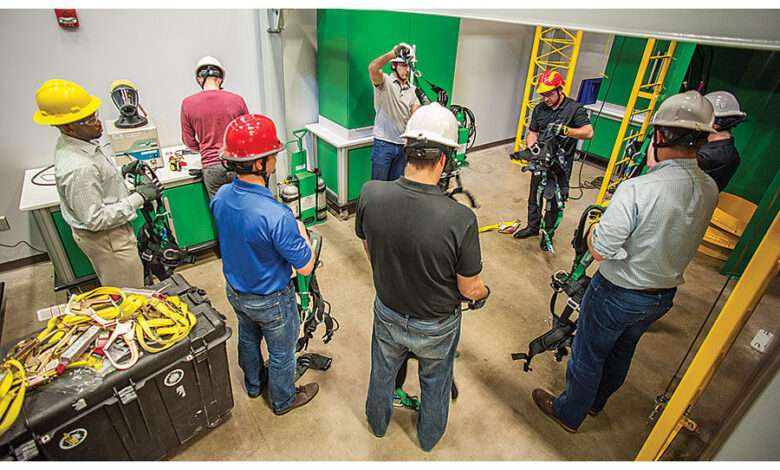How to Train Your Team for Confined Spaces

Working in confined spaces can be a dangerous task if the team needs to be appropriately trained. To protect your workers and ensure the job is done safely, it’s important to provide thorough and up-to-date training on confined space safety.
This blog post will overview the proper confined space training for your team for confined space work, covering safety protocols, risk assessments, and personal protective equipment. With the proper preparation, you can make sure your team is well-equipped to handle any potential hazards in the workplace.
What is a confined space?
A confined space is an enclosed or partially enclosed area not designed for continuous employee occupancy and has limited or restricted means for entry and exit. These areas pose significant safety hazards, including entrapment, asphyxiation, and exposure to hazardous atmospheres.
Therefore, workers must understand the risks associated with confined spaces and how to work safely.
Why is training necessary?
Training is essential for workers who enter and work in confined spaces. It is important to ensure that all workers understand the risks associated with this type of work and the safety protocols in place to protect them.
Training also ensures that workers know the signs and symptoms of a hazardous environment, so they can act appropriately to avoid potential harm. Proper training helps reduce the risk of accidents, injuries, and fatalities related to confined spaces.
Who needs training?
Employees who work in or around confined spaces need to be trained in order to remain safe while on the job. Training should include those who work in or around confined spaces, supervisors, rescue personnel and others who may need to enter a confined space for any purpose. Everyone who works in or near a confined space must be trained in safety protocols and procedures for working in a hazardous environment.
What type of training is available?
When it comes to confined space training, there are a variety of options available. From online courses to in-person classes and even certification programs, there is something to fit the needs of any organization. Online courses are often self-paced and cover hazard identification, atmospheric monitoring, rescue plans, and more.
In-person classes provide an interactive learning environment and often involve hands-on activities. Certification programs provide comprehensive instruction and may include written and practical assessments for those looking for a more comprehensive approach.
How often should training be conducted?
It is recommended that confined space training be conducted annually for all personnel working in confined spaces. This will ensure that everyone is updated with safety procedures and risks associated with confined spaces.
Additionally, companies should provide refresher courses and update the training program regularly to reflect changes in regulations and industry best practices.
Conclusion
This confined space training is essential for any workplace, including confined spaces. It helps ensure the safety of personnel and helps to prevent any potential accidents or injuries. Training should be conducted regularly to ensure that everyone involved is familiar with the procedures, hazards, and safety protocols that should be followed when working in a confined space.




